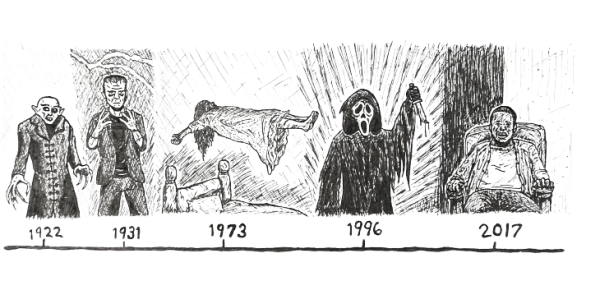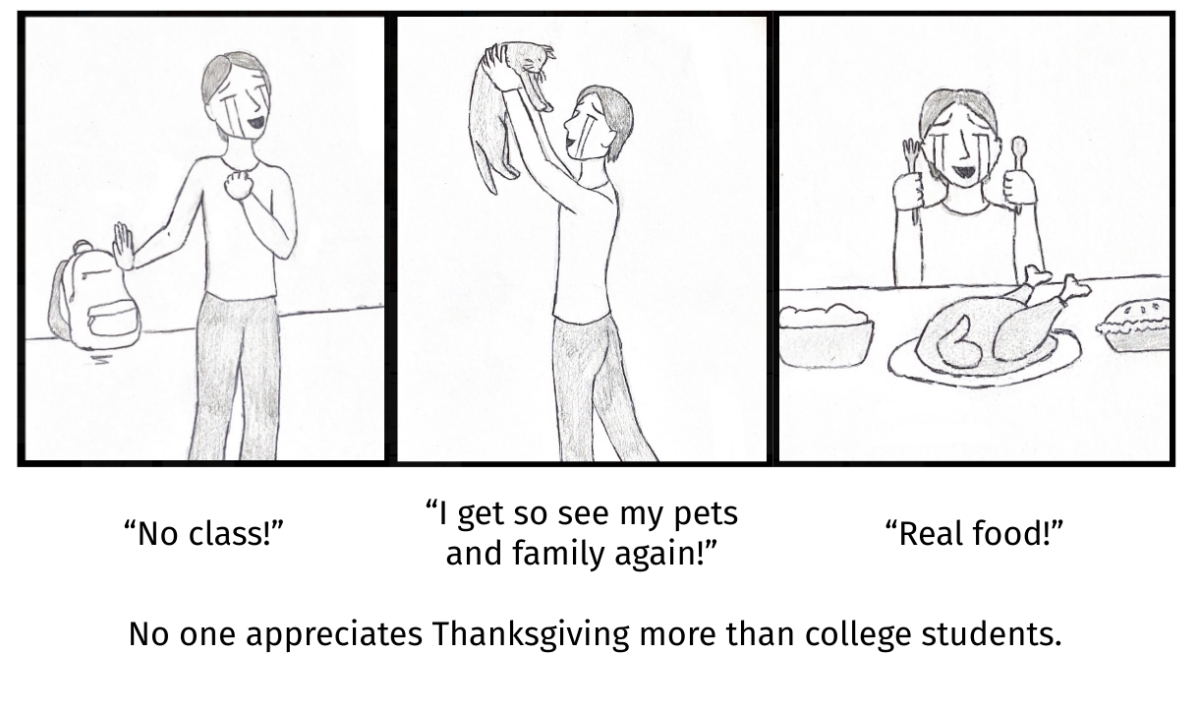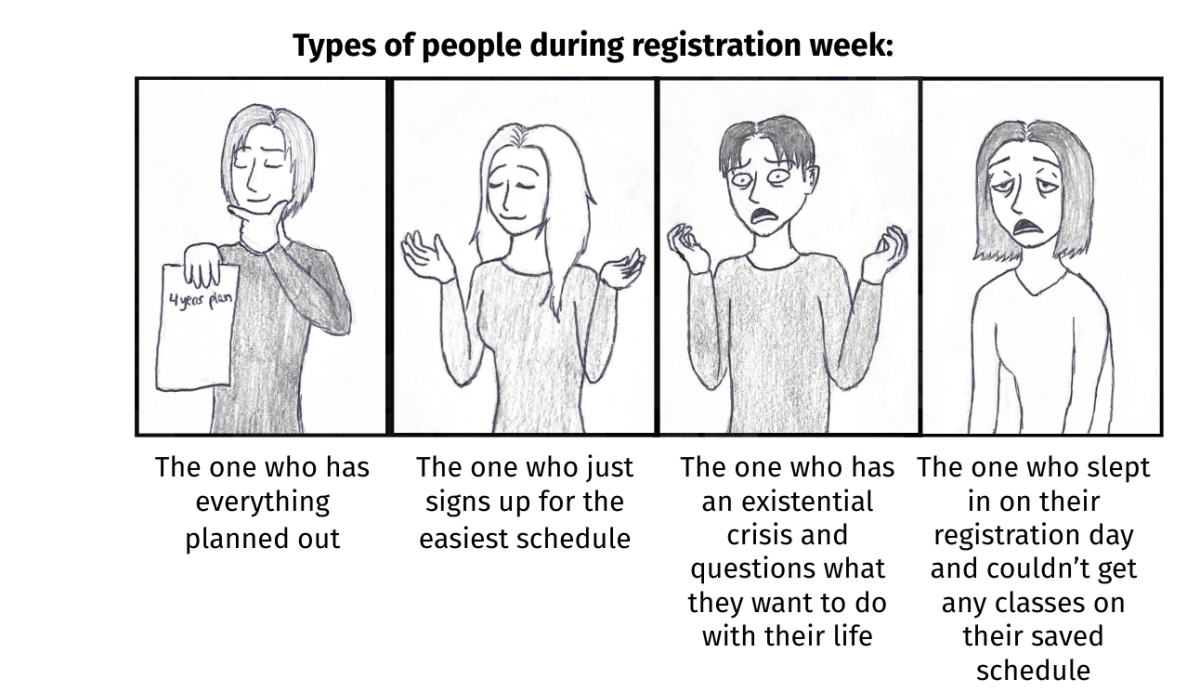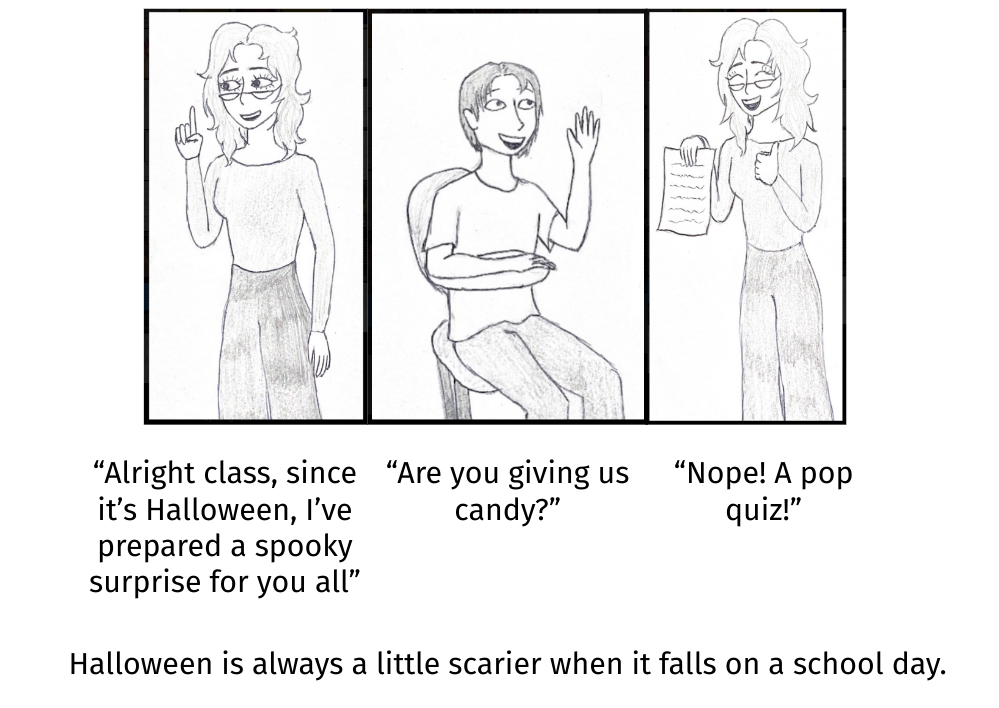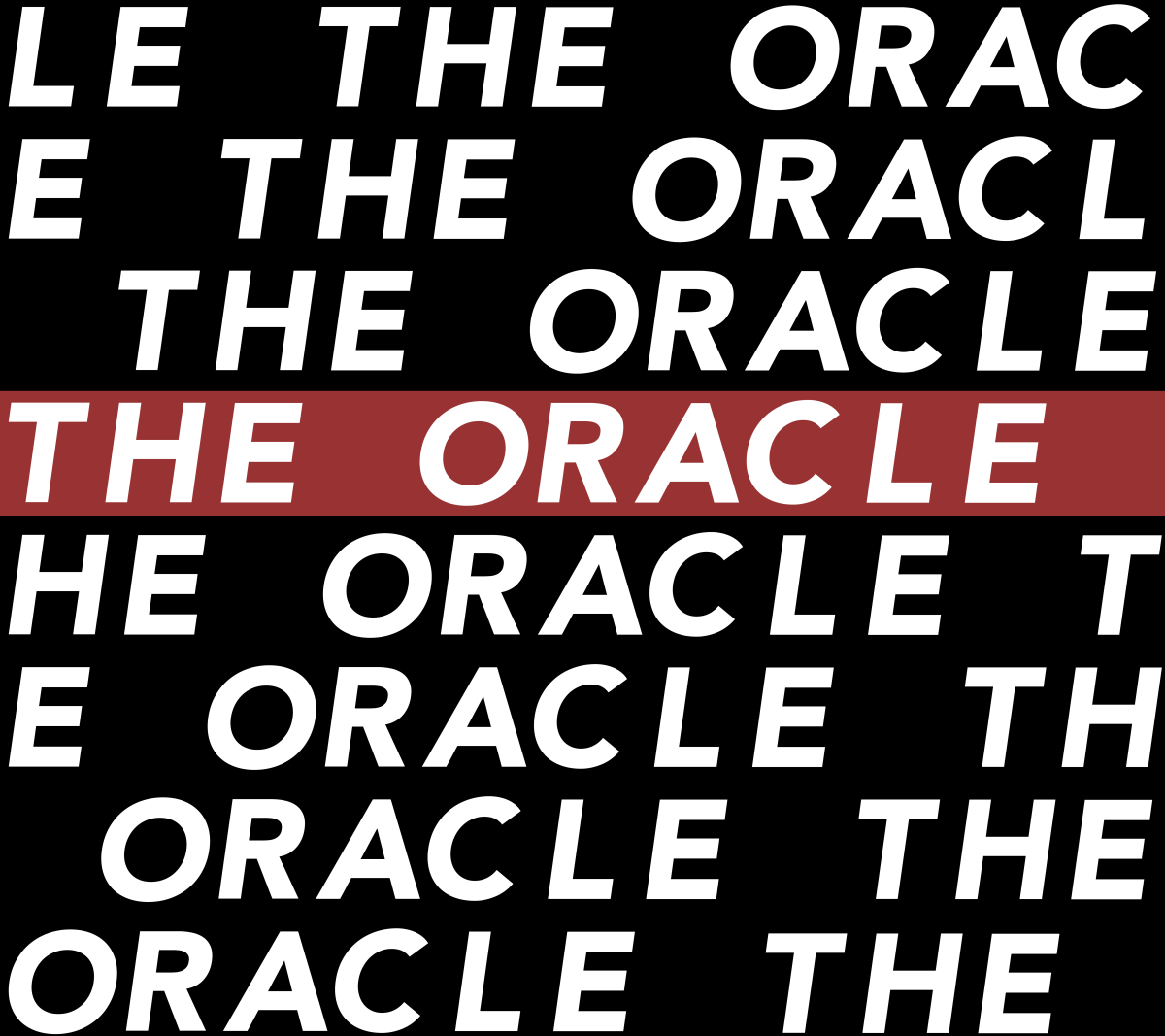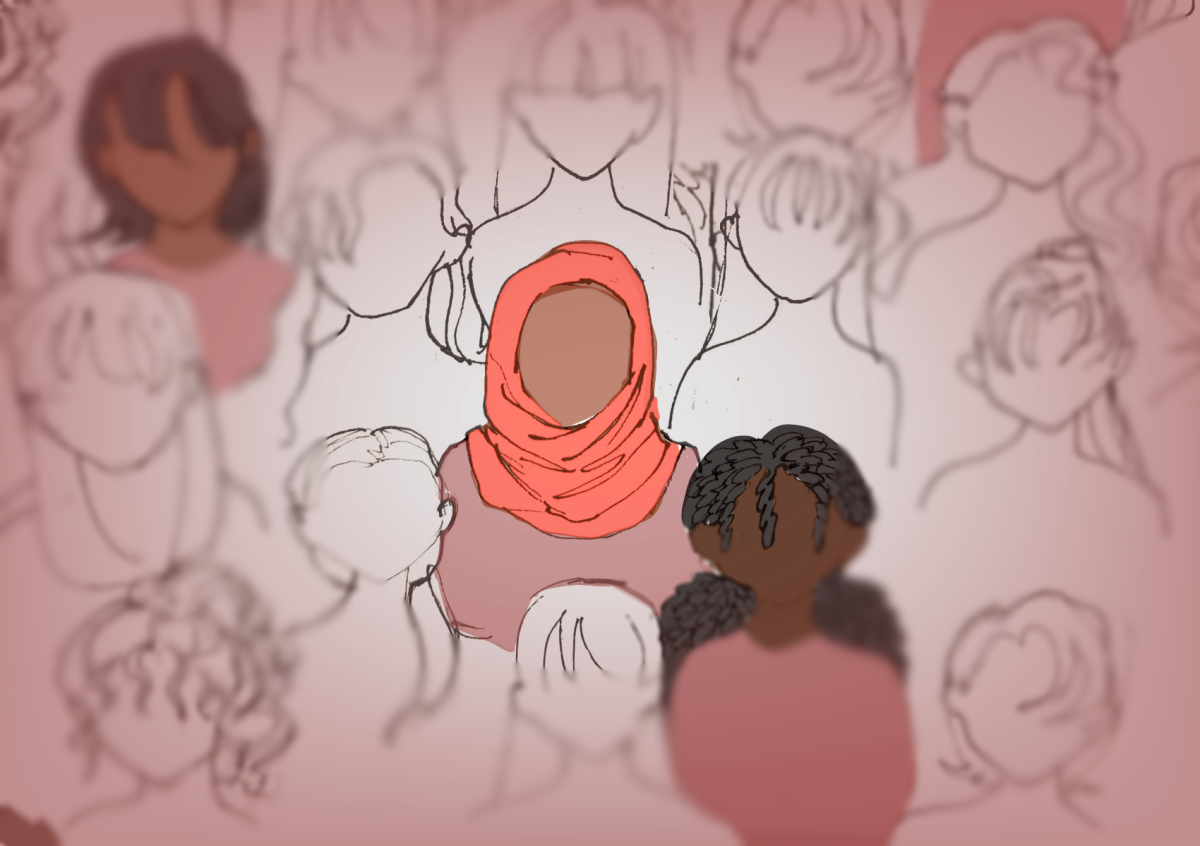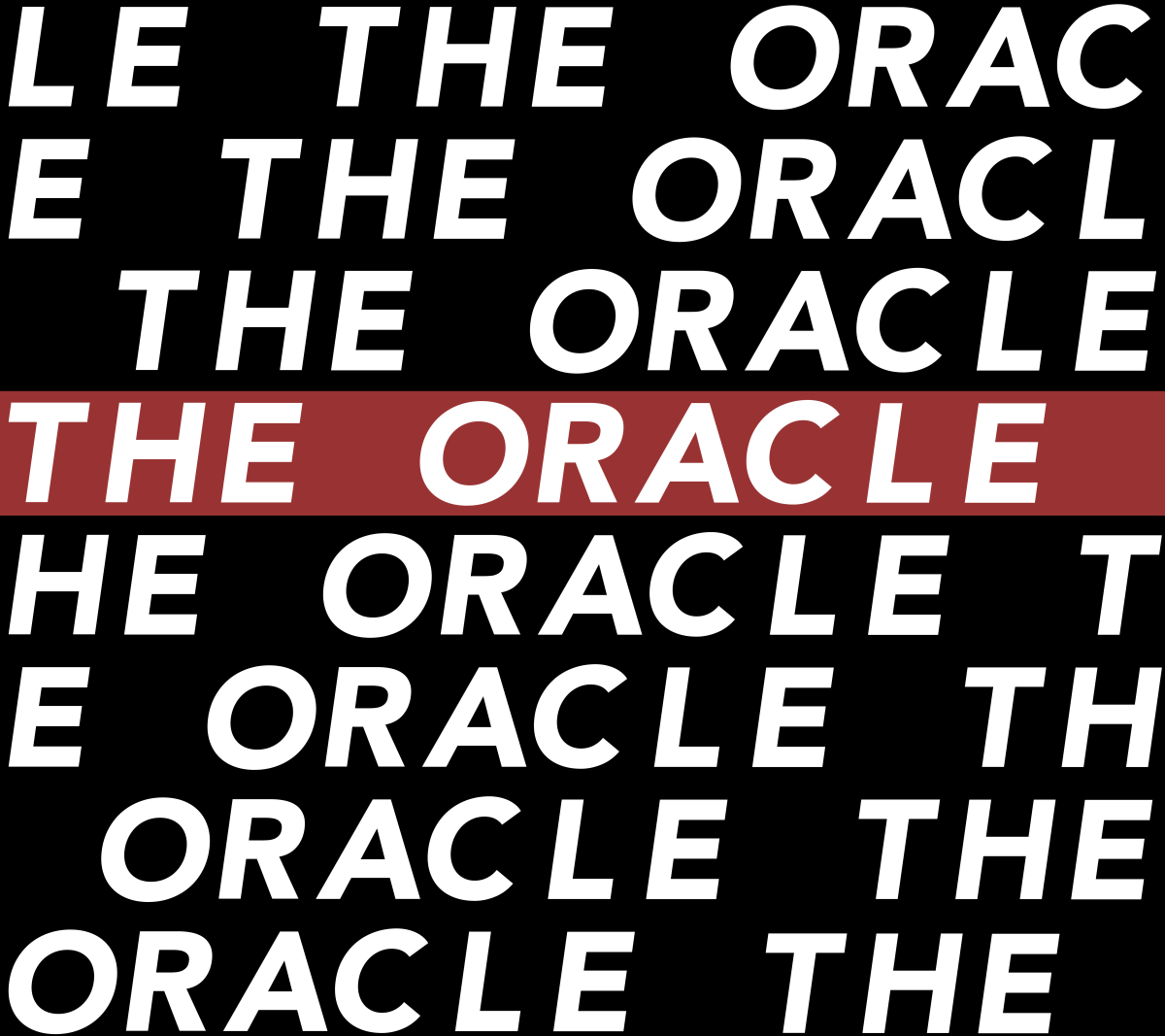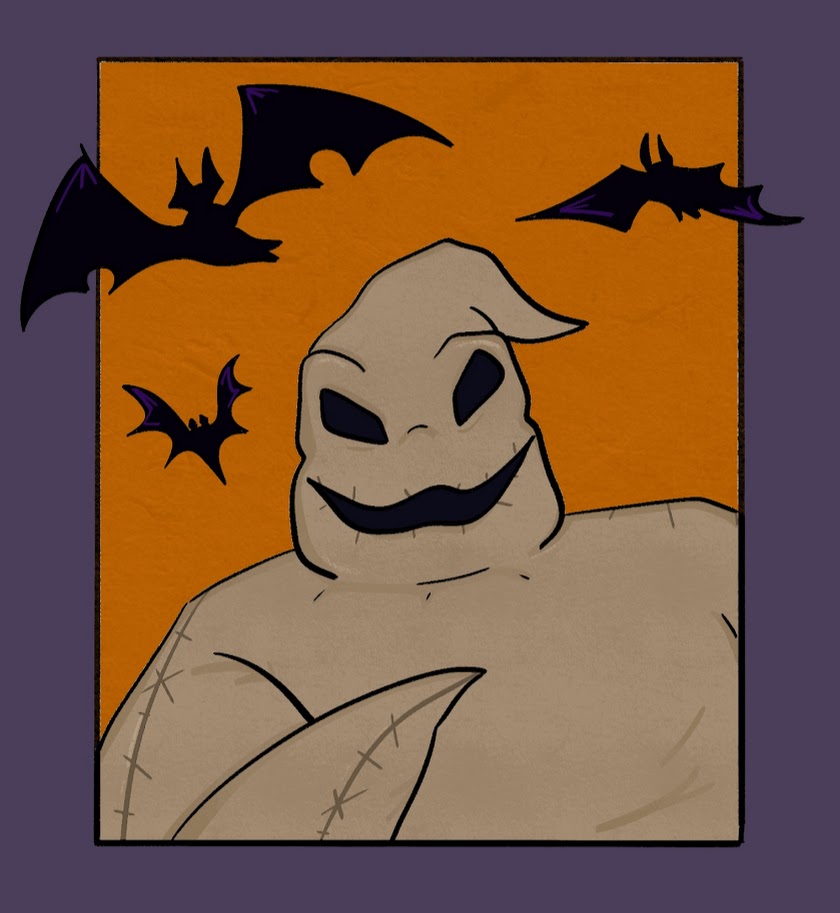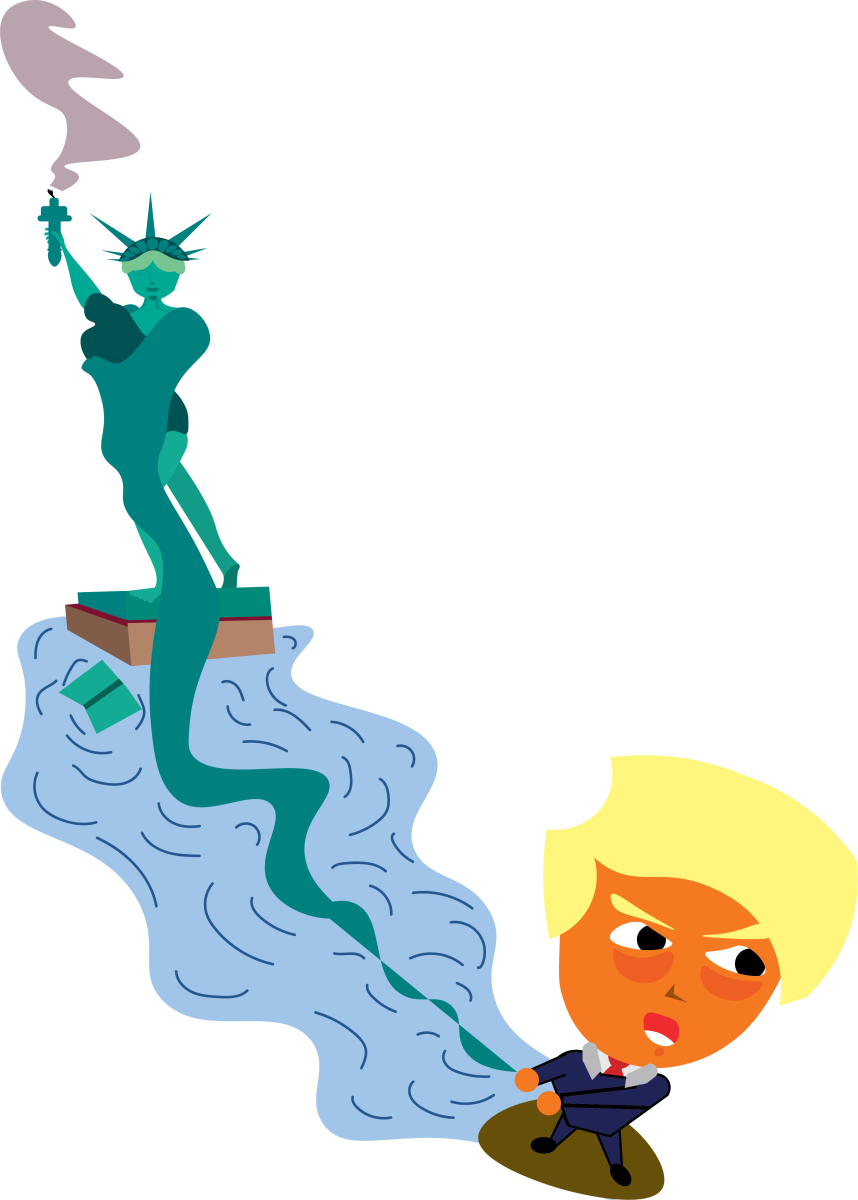Note: This article contains spoilers for movies up to a century old. Some foreign films are listed by their English-translated titles. Watch any movies listed at your own discretion.
Horror films have existed in different forms since the dawn of cinema. The first moving picture created with a camera and oldest surviving film was Louis Le Prince’s “Roundhay Garden Scene,” a two-second-long video depicting a London slice of life made in 1888. In 1896, the first “horror” movie came out: Georges Méliès’ “Le Manoir Du Diable,” (The House of the Devil). Released in the U.S. as “The Haunted Castle,” the film is a three-minute short about encounters with the Devil. The film was meant to fill audiences with wonder rather than fear. However, due to its content, which includes oversized bats, ghosts, skeletons, the Devil and other supernatural occurrences, it can technically be considered as the first horror movie, and also the first vampire movie.
Many horror classics arose in the 1920s-30s: widely regarded as the Golden Age of Horror. 1920 saw the release of the silent German Expressionism film “The Cabinet of Dr. Caligari,” directed by Robert Wiene. The film takes place in an exaggerated version of a German town where a crazed hypnotist, Dr. Caligari, does tricks with his somnambulist Cesare at a local carnival. When Cesare correctly predicts a murder, he becomes the main suspect in the investigation, and sinister secrets arise as the mystery around the Doctor and Cesare unfolds.
This film and its German Expressionist style reflected the state of German society at the time: exploring themes like control, paranoia and insanity. It also heavily inspired future filmmakers. The exaggerated set design, polarizing colors and focus on surreal visual storytelling went on to inspire modern directors like Tim Burton, whose film “Edward Scissorhands” exhibits major similarities with “The Cabinet of Dr. Caligari.”
Another famous and infamous film inspired by “The Cabinet of Dr. Caligari” was F. W. Murnau’s 1922 classic, “Nosferatu: A Symphony of Horror,” which remains an unsettling display of vampire horror to this day. The infamy of this film stems from the fact that it is a direct plagiarism of Bram Stoker’s novel, “Dracula.” Producer Albin Grau originally got the idea to shoot a vampire movie from folk stories he heard from locals while stationed in Serbia during WWI.
Grau eventually decided he wanted to retell “Dracula,” but was unable to secure the rights from Stoker’s estate, and the story would not enter the public domain until 1962. Grau and Murnau decided to film and release the movie anyway, making changes to character names (Count Dracula to Count Orlok, Harker to Hutter) and plot points in hopes of avoiding a lawsuit, but they were sued anyway. All copies were ordered to be destroyed, and this iconic horror film would have been lost to the ages had a copy not found its way to the US, where “Dracula” was in the public domain.
The other films to come out of the Golden Age of Horror were some early monster films from Universal Studios. Tod Browning’s 1931 “Dracula,” starring Bela Lugosi as the titular vampire, solidified traits like menacing charisma, a thick accent and the trademark cloak as staples in the vampire genre. James Whale’s “Frankenstein,” also released in 1931, starred horror icon Boris Karloff as the Monster. Karloff’s portrayal also became the iconic look for the monster that people recognize to this day, with the flat, tall head, bolts in the neck and the classic lumbering walk.
Karloff also starred as Imhotep in Karl Freund’s “The Mummy,” released in 1932, and director James Whale created “The Invisible Man” in 1933, based on H. G. Wells’ novel of the same name. These Universal Horror films and characters would spawn countless sequels and even more iconic monsters that are still recognizable today.
It is impossible to discuss the history of horror without mentioning British director Alfred Hitchcock, nicknamed “The Master of Suspense.” Hitchcock is remembered for classics including 1954’s “Rear Window,” 1958’s “Vertigo” and 1963’s “The Birds.” One of his films stands out today as his most famous work, as well as a predecessor to the slasher genre.
“Psycho,” released in 1960, is about secretary Marion Crane, played by Janet Leigh, who is on the run for stealing from her employer. She stops and stays at the backroad Bates Motel and meets the charismatic owner, Norman Bates. “Psycho” terrified audiences by killing the apparent protagonist early in the film, as well as having two versions of the film play in cinemas: one where the villain looks into the camera and one where the same happens, but a skull is composited over his face for a few frames. Star Janet Leigh is also the mother of actress Jamie Lee Curtis, who would follow in her footsteps in the horror genre.
Alongside Hitchcock, the 1950s-60s gave us several other legendary horror films. The 50s gave us “The Blob,” “Invasion of the Body-Snatchers,” “Godzilla” and 1958’s “Dracula” starring Christopher Lee as the Count. Lee continued to play Dracula in a number of sequels throughout the 1960s. Horror icon Vincent Price starred in countless horror movies like “House on Haunted Hill” and the original “House of Wax.” 1968 gave audiences two horror classics: Roman Polanski’s “Rosemary’s Baby,” about a pregnant woman who believes the child she carries is not human, and George A. Romero’s “Night of the Living Dead,” which with its iconic depiction of the undead and its social commentary remains the definitive zombie film for horror fans.
The 1970s is the decade in which the movie nicknamed “The Scariest Film Of All Time” was released: William Friedkin’s 1973 terror “The Exorcist.” The film is about an actress who becomes convinced that her daughter is possessed and may have had something to do with the death of one of her associates. The film’s plot dealt heavily with possession and the Devil, which was a shock for 1970s audiences — especially Christian viewers — who had never seen such content on the silver screen before. The film gained a reputation for being cursed, a belief that may have been due to countless strange occurrences during production. Ranging from mundane challenges like missing props to more extreme happenings like conspicuous deaths surrounding the cast, the destruction of the set before filming and the permanent injury of young star Linda Blair while shooting a scene that is included in the final film, it is easy to understand why people continue to believe that “The Exorcist” was cursed.
On top of giving audiences terrifying possession stories, the 1970s also brought a new horror genre to the forefront: the slasher. Slashers are characterized by many tropes which include masked killers, creative non-firearm weapons, a high kill count of horny teenage victims and “the final girl.” Tropes like these are parodied in horror comedies such as “Scream,” “The Cabin in the Woods” and the “Scary Movie” franchise. “The Texas Chainsaw Massacre” and “Black Christmas,” released within a few months of each other in 1974, are often argued to be early versions of slasher films. It was John Carpenter’s 1978 “Halloween,” starring a young Jamie Lee Curtis, that became regarded as the first true slasher, and films in the genre have drawn heavy inspiration from it for decades.
The slasher genre continued to grow after “Halloween,” with 1980’s “Friday the 13th” being an example of a movie which played off of the success of “Halloween” and eventually developed into a franchise of its own. Wes Craven’s 1984 film “A Nightmare on Elm Street,” about the killer Freddy Krueger, who attacks his victims in their dreams, also spawned its own sequels and reboots. The two franchises even crossed over in 2003’s “Freddy vs. Jason,” where the iconic killers fought each other. Slashers dwindled as the 90’s approached, although a few examples like “Child’s Play” and “The Slumber Party Massacre” remain notable today.
The 80s did contribute more to horror than slasher films. Horror author Stephen King had a number of his books and stories adapted into popular films, like “Children of the Corn,” “Cujo” and “The Shining.” Director John Carpenter gave audiences a number of “Halloween” sequels, as well as gory delights like “The Fog” and “The Thing.” Body-horror master David Cronenberg disgusted audiences with “Videodrome,” “Dead Ringers” and “The Fly,” a remake of the 1958 film of the same name. Horror comedies like “Little Shop of Horrors,” “Beetlejuice” and “Gremlins” also released.
The 90s saw a spike in children’s horror with the release of movies like “Casper,” “The Nightmare Before Christmas,” “Edward Scissorhands,” “Hocus Pocus” and “The Addams Family.” This age was also the early rise of CGI in movies, which led to some detriment to the quality of horror films.
There were still many highly influential films for horror during that time. Notable thriller horror like “The Silence of the Lambs” and “The Sixth Sense” terrified audiences with their compelling stories and suspenseful atmospheres. Vampires had a comeback with “Bram Stoker’s Dracula” and “Interview With The Vampire.” Offbeat horror comedies like “Leprechaun” (starring a young Jennifer Aniston) and “Arachnophobia” made audiences laugh right on the edges of their seats.
The most notable 90’s horror film is the aforementioned “Scream,” which took the established slasher and horror rules and parodied them, accidentally becoming one of the most famous slasher franchises while adding novelty to the genre with new aspects like the mystery of the killer’s identity. “Scream”’s popularity led to more slashers like “I Know What You Did Last Summer” and “Final Destination,” as well as to many more horror parodies like “Scary Movie.”
Right at the turn of the century, 1999’s “The Blair Witch Project” terrified the world. With the film being marketed across the early internet as a documentary and having actors fake their deaths, the disturbing question of whether or not the shaky camcorder footage audiences were watching was a true story arose. Though not the first, “The Blair Witch Project” inspired many future “found footage” horror movies, such as “Lake Mungo,” “Paranormal Activity” and “Unfriended.”
The 2000s-10s was an interesting period for horror. There were many flops and failures in the industry, both critically and at the box office. Major 80s slasher franchises were rebooted a number of times but failed to get off the ground. A few notable animated children’s horror movies were released, like “Monster House” and Laika Studios’ “Paranorman” and “Coraline.” There were plenty of good horror films aimed at adults as well, with standouts including “Shaun of the Dead,” “The Descent” and the “Saw” films, but for the most part, the horror industry dwindled from its former glory.
Many of the best horror films around this era were foreign horror films. Japan’s “Ringu” told the story of a woman investigating a cursed tape that is said to kill the viewer within a week of watching it. “Ju-On: The Curse” is another Japanese horror film about the idea that a building that housed a tragedy will absorb it and bring it upon those who visit. These films spawned popular American remakes “The Ring” and “The Grudge,” both of which received sequels as well. South Korean zombie film “Train to Busan” is another excellent example of foreign horror. The movie is remarkable for its heavy character development and political commentary, both of which are rare standouts in the horror genre. Australia’s “The Babadook” similarly laced horror with a compelling family drama and character development. Perhaps one of the greatest foreign horror films of all is the Swedish horror film “Let The Right One In,” which follows a young boy who develops a close friendship with a young girl who turns out to be a vampire. Rotten Tomatoes ranks this film at number 2 on their list of “The 200 Best Horror Films Of All Time.”
One saving grace for modern horror was Blumhouse Productions. Blumhouse is a production company established in 2000, whose first hit was the above-mentioned “Paranormal Activity” in 2009. While they have produced non-horror hits, like the Oscar-winning “Whiplash” from Damien Chazelle, the company’s main focus is horror. Blumhouse produced chilling horror films like the “Insidious” series, Scott Derrickson’s “Sinister” and “Black Phone,” Jordan Peele’s “Get Out” and most recently, Emma Tammi’s “Five Nights At Freddy’s.”
Jordan Peele, of “Key & Peele”, has been another horror powerhouse out of left field. Peele wrote and directed 2017’s “Get Out,” a gripping thriller laced with scares, laughs and social commentary that currently sits at number six on Rotten Tomatoes’ “The 200 Best Horror Movies Of All Time.” It was immediately clear that the talented comedian had a knack for terror as well. He followed his debut with 2019’s “Us,” a doppelganger horror story, and 2022’s “Nope,” which delved into alien horror while combining with numerous other genres, both of which he wrote and directed.
Another production company that sustained horror in recent years is the independent Manhattan-based company, A24. Like Blumhouse, A24 is not exclusively a horror producer, but many aspects of the company draw in independent horror directors and filmmakers. The company values the artistic vision of the filmmaker above all else and is not afraid to take risks or even financial loss, as seen with 2023’s “Beau Is Afraid,” to maintain the integrity of that vision. Without the censoring of other studios, horror filmmakers are truly free, which is why A24 has released some of the most disturbing films in history in the last few years, such as Ari Aster’s “Hereditary” and “Midsommar,” Ti West’s “X” and “Pearl,” Alex Garland’s “Men,” Robert Eggers’ “The Witch” and “The Lighthouse” and the company’s most recent hit, 2023’s “Talk to Me.” The company will likely remain a modern horror staple, especially given their recently expressed desire to obtain rights to the “Halloween” franchise.
The future of the horror industry is a mystery. There is no telling where we could be aimed or what lies ahead for horror fans in the coming age. In all of the unknown, one thing is for sure: filmmakers and artists will continue to try to find ways to terrify and awe audiences until the end of time, so no matter what lies ahead, we can take comfort in the fact that we will be terrified. To misquote Benjamin Franklin, “Nothing is certain in life but death, taxes and scares.”
